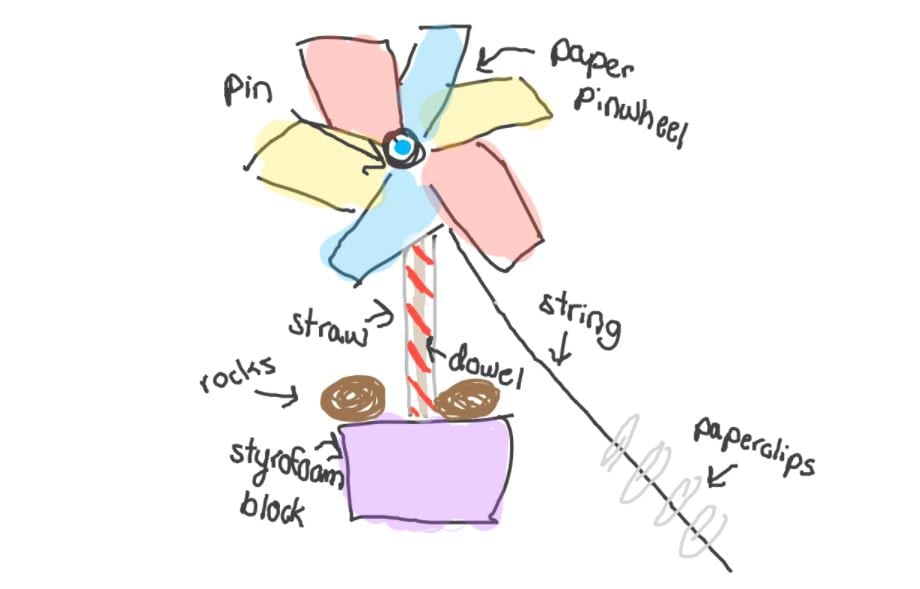Ninth Grade Phsyics Students Design Their Own Windmills

Drawing by Amaya Beatty ‘24
Ninth grade students in Physics First recently completed a long-term windmill engineering project. In order to end up with a finished product, students used the design-thinking process to create several iterations of their windmills, with each new version improving upon the previous. Despite working entirely from home in December and January, they were able to get hands-on experience by building physical prototypes using everyday household items.
The project’s initial goal was “to use the engineering design cycle to develop a device that will allow people to harness energy from a renewable source: the wind.” The cycle begins with “ask” (what’s the problem?), followed by “imagine,” “plan,” “create,” “improve,” and finally, “share.” All students went through the entire process from start to finish, presenting their windmills to the class via Flipgrid.
Amaya Beatty ’24 began with a vision: use four pieces of square paper, one piece of circular paper, a pin, and a straw to create her windmill. Upon entering the “plan” phase, she substituted the circular paper for a cork and added a styrofoam base. When she created her prototype, she used glue to bind the materials and rocks to weigh them down. When Amaya blew a hair dryer to simulate the wind, she found that her windmill both rotated and stayed in place; however, she hadn’t achieved maximum speed, which would allow her device to reach its full potential. To improve the design, Amaya added more cork (for stability) and removed one rock from the base. Her final product, which she shared with her peers, performed its desired function: it harnessed energy from the wind.
In January, the physics classes began the project’s second phase. The goal stayed the same with the addition of a new challenge: use the harnessed energy to lift mass (10 paper clips). Students built upon their original designs by adding new components, like strings and spools of thread, to get their paper clips in the air.
The second phase proved to be more of a challenge than the first, with some students incorporating major changes into their prototypes. Haila Desai ’24 changed her windmill from vertical to horizontal in order to stabilize it. Isabella Didie ’24 also opted for a horizontal design, which ended up simplifying her windmill rather than complicating it. Both students initially struggled to lift their paper clips but became successful after several attempts. Using a trial-and-error method, students learned from their mistakes while applying important physical concepts.
By Katie Kasperson ’17, Marketing and Communications Intern
